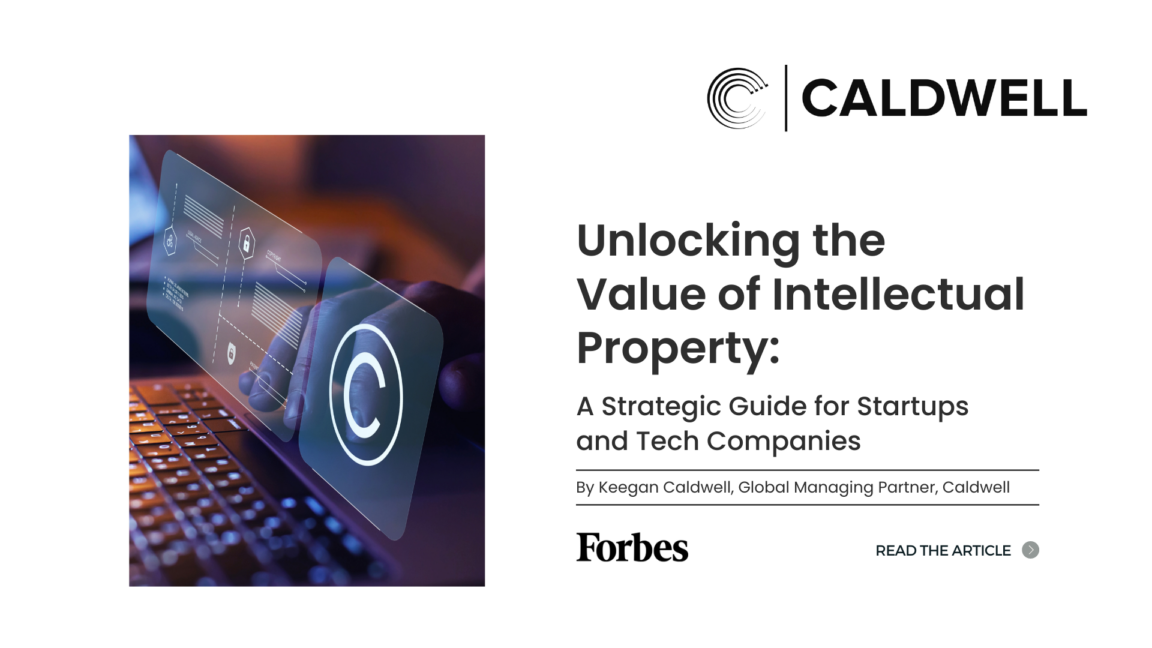Unlocking The Value Of Intellectual Property: A Strategic Guide For Startups And Tech Companies
January 30, 2024


Written by: Keegan Caldwell
Startups and tech companies are disruptive by nature. We’ve seen that with the advent of the dot-com era, where Google broke free from its browser origins to shape our shopping, dining and travel habits while also shaking up the academic, professional, personal and entertainment spaces.
Airbnb redefined what it meant to make any place feel like home when traveling. Spotify turned music streaming into a social event. And Canva transformed us all into graphic designers.
At a molecular level, these companies started with basic ideas: internet browsing, property rentals, digital music streaming and content creation. What sets them apart? The intellectual property, or IP, behind the execution.
IP is a valuable asset for tech companies and startups. It can protect your inventions, ideas and innovations, give you a competitive edge in the marketplace and even secure funding.
In fact, recent trends have indicated an increase in IP-backed funding. As more innovative ideas seek funding, this guide can serve as a way to help leaders of startups and tech companies understand IP, determine the value of patents and learn how they can be used as collateral for debt or equity-based financing.
Intro To IP
IP covers any non-tangible creations or assets made by humans. Take smartphones, for example. The phone’s design, software, brand or product names and concepts all fall under IP. And as companies prepare for funding, they must be prepared to show their assets are worthy of protection.
Before diving into funding, companies must know the differences between types of IP. This includes patents, copyrights, trademarks and trade secrets.
• Patents are exclusive rights provided to inventions. Typically reserved for new creations, this can include a product, process or solution.
• Copyright refers to the legal rights of the owners of the intellectual property. Simply put, copyrights determine the original creators and who has the authority to reproduce work.
• Trademarks are legally registered or established symbols, signs, words or phrases that distinguish one company, product or service from another.
• Trade secrets refer to confidential information. Think: recipes, formulas, technical information, research and data, manufacturing processes or software algorithms. Value lies in the secrecy of this information.
Why You Should Be Protecting Your IP
How many times have you expressed a good idea only for someone else to claim it as their own? It happens at school, at work and among friends. Now imagine attaching a few million dollars to that idea. Wouldn’t you fight for ownership?
IP law works in the same way. It determines the best ways to protect you and your assets by finding and enforcing your rights as the owner. IP law also helps you with the technical aspects of navigating the different types of IP. Together, you can develop an IP strategy to determine valuation and secure funding.
How To Seek IP-Backed Funding
I’ve found the biggest hurdle to overcome when seeking IP-backed funding is proving its ROI. Companies can achieve this through storytelling and data.
IP debt lending requires a combination of quantitative and qualitative information. The qualitative data reveals the connection between management teams and their IP portfolios, products and strategies. In essence, it helps funders understand the people they will work with and their relationships with companies, partners, shareholders and customers.
The quantitative data is more straightforward: What can we learn about the revenue, and how many patent families are there? When seeking funding, the more patent families, the better. And the most important piece of data? Revenue. Funders need you to show a straightforward plan to generate revenue or an exit. Share which patents are contributing to company revenue, and provide information about predictive patents based on your industry and the company’s future.
Find a way to tie the numbers together to your brand’s mission and your IP. Talk about your customers, explain your market confidence and map out the potential opportunities before you. There’s a greater chance funders will feel an emotional connection when you can convince them of your vision.
And if you’re looking at scaling or making a clear exit, consider looking into debt funding. Finding partnerships through collaborations or mergers and acquisitions can be fruitful. In fact, acquisition exits can bump patent company values.
Protecting Your IP Rights
As the value of IP continues to climb, so will the opportunities to secure debt funding and tech valuations. You many want to bring in the help of IP law firms or experts who understand how to pull public data on other intangible assets to direct sales, settlements and royalty rates. (Disclosure: My company helps with this, as do others.)
And IP law can benefit entrepreneurs beyond protection. Combined with your passion, this data will determine value, clearly outlining how or if your intellectual property and patents produce returns on investment.
The increased trend in using intellectual property to secure debt and equity-based funding will also require companies to take additional steps to protect intangible assets. Figuring this out before issues develop will show funders just how much you believe in your IP and understand its value. After all, it’s not just about protecting your innovations. Intellectual properties should be protected because of the licensing and fundraising opportunities they provide when driving up value for an IPO or acquisition.
The information provided here is not legal advice and does not purport to be a substitute for advice of counsel on any specific matter. For legal advice, you should consult with an attorney concerning your specific situation.
Read the article on Forbes.